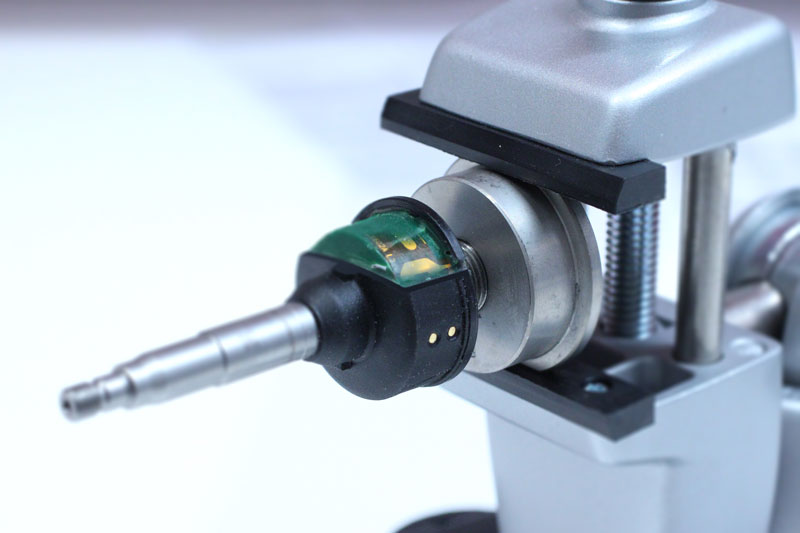Assioma’s uniqueness
About ProductsPlug&Play installation, dual Bluetooth/ANT+ communication, data consistency, automatic temperature compensation: These are must-have features for a pedal-based power meter. Favero Assioma goes beyond. In this article, we will focus on the unique aspects that make the Assioma power meter pedals stand out sharply from the rest.
Electronic-less pedal body: easy and low-cost maintenance
Being Assioma a pedal-based power meter, this is probably the most unexpected and exclusive of its features: the pedal body doesn’t contain any electronic parts. In fact, all the electronic components are positioned in a safe and protected area around the pedal axle.
Plus, this feature makes the Assioma pedal body as easy to disassemble as a regular one and, if needed, it allows you to take care of its maintenance by yourself; bearings lubrication and replacement included.

Bicomponent resin block: absolute waterproofing
Being 100% waterproof is essential for any cycling power meter since the level of the signals in the electronic circuits, reading the strain gauges, is of the order of the microvolts, therefore very vulnerable to humidity. The solution we have implemented is to eliminate any opening on the outside (eg battery compartment, USB ports, charging slots, etc.) and to place all the electronics, battery included, in a special bicomponent resin block.
Inside Favero Assioma there's literally no space left for water, nor humidity.

Built-in battery: a reliable charge level monitoring
What if your power meter dies all of a sudden in the middle of a race/workout?
You would have to either stop cycling or continue without power data, nor recordings of your session for a later analysis. Not to mention that if you were using an indoor/virtual cycling app, well, it would be literally GAME OVER.
With Assioma this won’t happen. While devices using replaceable batteries usually provide approximate indications about their battery life, the Assioma rechargeable battery grants to the cyclist a constant monitoring of the charge level through the Favero Assioma App.
Reduced weight and stack height for an optimal pedal stroke
Being light is more important for a pedal than it is for other bike parts as any change in speed in the pedal means a loss of energy. Assioma has also the best stack height of all the power meter pedals out there: 10.5 mm. Some pedal manufacturers state that the closer the foot is to the spindle, the more efficiently the power is transmitted to the crank arm. In addition, many cyclists say a smaller stack height allows to have a smoother and more natural pedal.
IAV Power: ±1% accuracy even with oval chainrings
Many power meters calculate power using the average angular velocity (Average) per rotation instead of the instantaneous angular velocity (real) value: this may introduce an additional error, up to 4.5%.
Assioma instead, thanks to its exclusive IAV Power system and an integrated gyroscope, measures the actual instantaneous angular velocity to guarantee the same ±1% degree of accuracy with any style of pedaling, even with oval chainrings.
To know more about it, read also “Advantages of the IAV Power System”.
Read the other articles
- Assioma PRO RS: precision on the road, power at your feet
- The core of Assioma PRO
- Advantages of Rechargeable Batteries in Pedal-Based Power Meters
- Rock solid reliability
- How to install the Assioma PRO pedals
- Rechargeable battery vs. Replaceable battery?
- The resistance of Assioma: tested in laboratory, proven on the road
- The advantages of the IAV Power
- How to Update the Firmware of Assioma
- Data measured by the Assioma power meter pedal
- The Accuracy of Assioma: consistent and guaranteed
- Install Assioma just like a common pedal
- Assioma Recharging System: Smart and Green
- Assioma DUO-Shi: All you Need to Know
